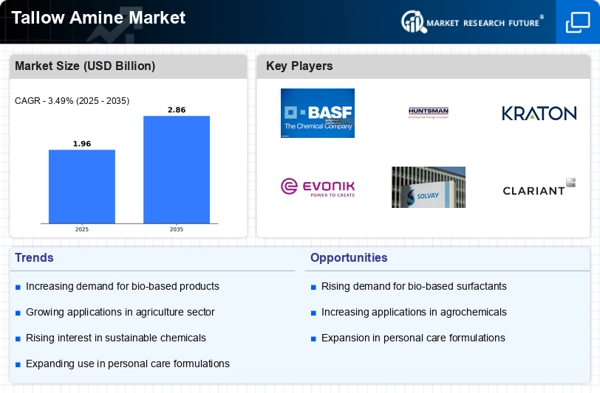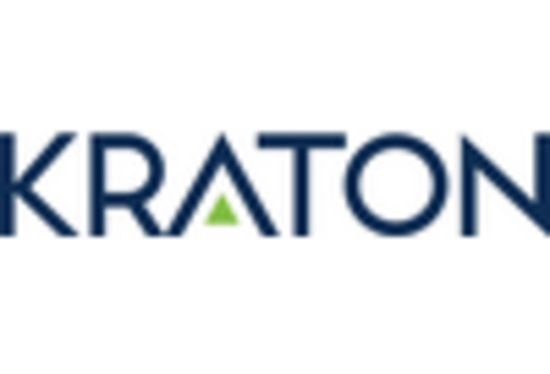Technological Innovations
Technological innovations are transforming the Tallow Amine Market, leading to enhanced production processes and product formulations. Advances in chemical engineering and processing technologies are enabling manufacturers to produce tallow amines more efficiently and with improved quality. These innovations may result in cost reductions and increased competitiveness within the market. Additionally, the development of new applications for tallow amines in various industries, such as personal care and pharmaceuticals, could further stimulate demand. As companies adopt cutting-edge technologies, the Tallow Amine Market is likely to witness a shift towards more specialized and high-performance products, catering to diverse consumer needs.
Sustainability Initiatives
The Tallow Amine Market is experiencing a notable shift towards sustainability initiatives. As consumers and manufacturers increasingly prioritize eco-friendly products, the demand for tallow amines, derived from animal fats, is likely to rise. This trend aligns with the broader movement towards sustainable sourcing and production practices. Companies are investing in sustainable supply chains, which may enhance the appeal of tallow amines as a biodegradable alternative to synthetic chemicals. Furthermore, regulatory frameworks are evolving to support sustainable practices, potentially driving growth in the Tallow Amine Market. The increasing awareness of environmental issues among consumers suggests that products containing tallow amines could see heightened demand, thereby influencing market dynamics significantly.
Rising Demand in Agriculture
The Tallow Amine Market is poised for growth due to the rising demand for agricultural products. Tallow amines are utilized as surfactants and emulsifiers in agrochemical formulations, enhancing the effectiveness of pesticides and fertilizers. As the global population continues to grow, the need for increased agricultural productivity becomes paramount. This trend is likely to drive the demand for tallow amines, as they play a crucial role in improving crop yields and ensuring food security. Market data indicates that the agrochemical sector is expanding, with projections suggesting a compound annual growth rate that could positively impact the Tallow Amine Market. Consequently, the agricultural sector's growth may serve as a significant driver for tallow amine consumption.
Growth in Personal Care Sector
The Tallow Amine Market is benefiting from the growth in the personal care sector, where tallow amines are increasingly used as conditioning agents and emulsifiers. The rising consumer preference for natural and organic products is driving manufacturers to incorporate tallow amines into their formulations. This trend is particularly evident in hair care and skincare products, where the demand for effective yet gentle ingredients is paramount. Market data suggests that the personal care industry is expanding, with a focus on sustainable and natural ingredients, which may enhance the appeal of tallow amines. As this sector continues to evolve, the Tallow Amine Market is likely to experience increased opportunities for growth.
Regulatory Support for Biodegradable Products
The Tallow Amine Market is likely to benefit from regulatory support aimed at promoting biodegradable products. Governments and regulatory bodies are increasingly implementing policies that encourage the use of environmentally friendly chemicals, which may favor tallow amines due to their natural origins. This regulatory landscape could create a more favorable environment for the Tallow Amine Market, as manufacturers seek to comply with stringent environmental standards. The potential for incentives and subsidies for sustainable practices may further drive the adoption of tallow amines in various applications. As regulations evolve, the Tallow Amine Market appears well-positioned to capitalize on these trends, potentially leading to increased market share.

















Leave a Comment